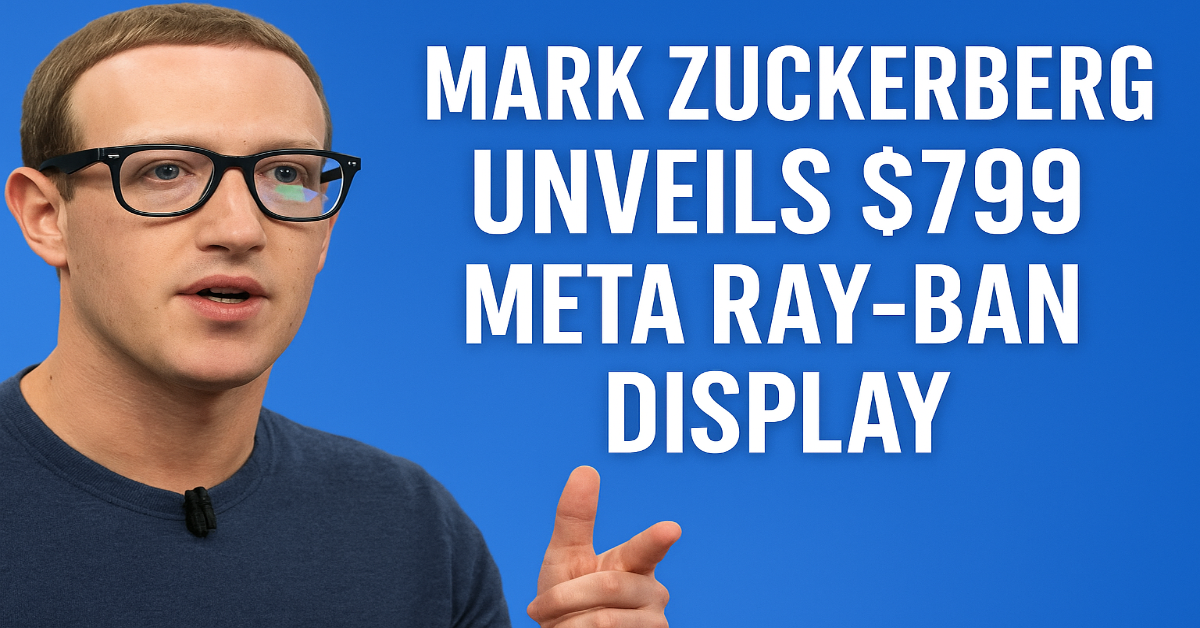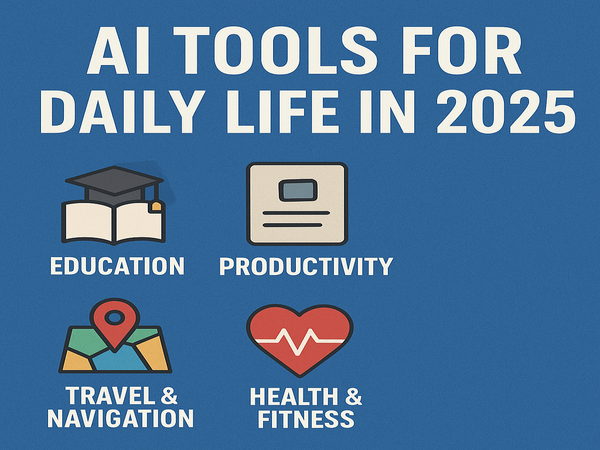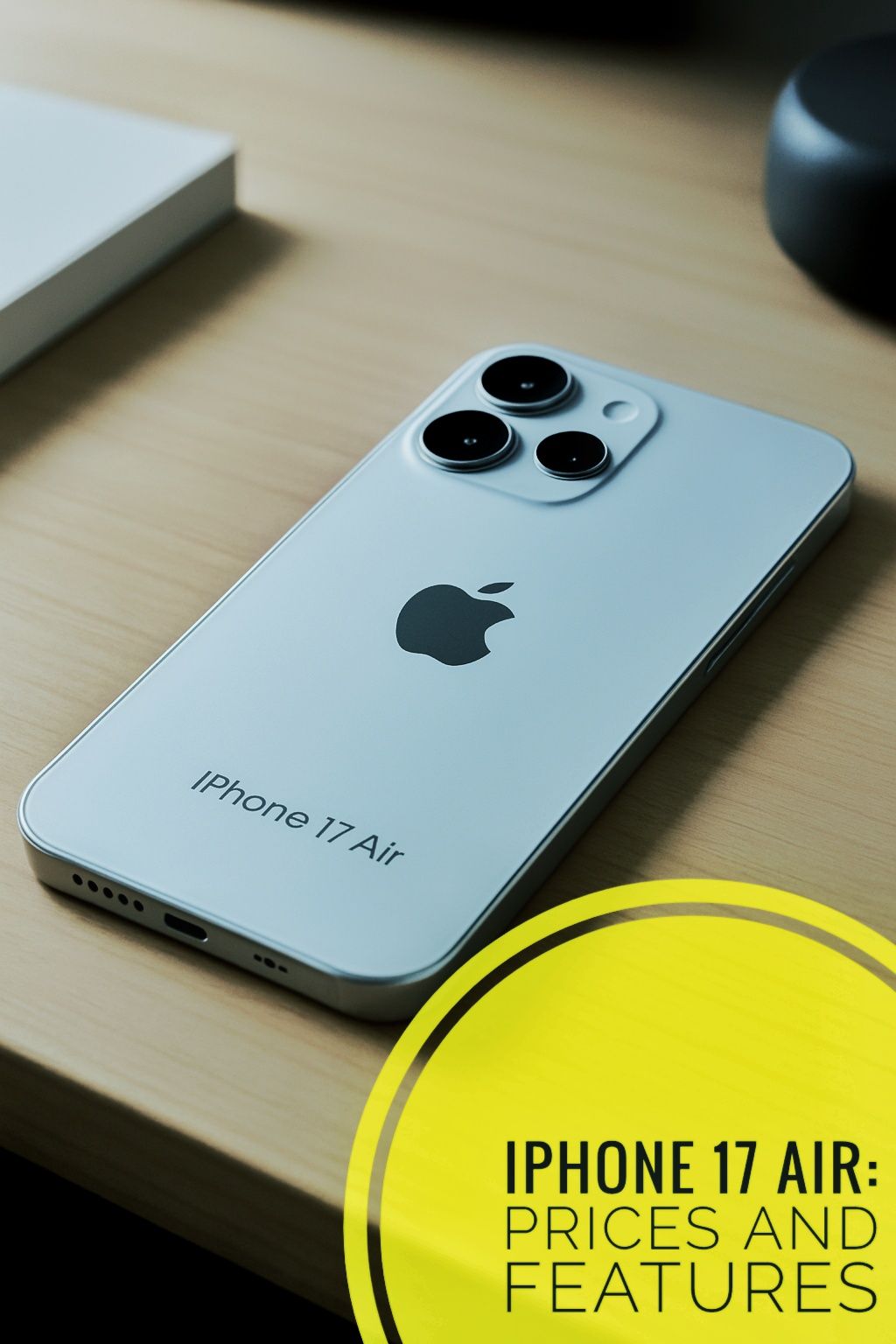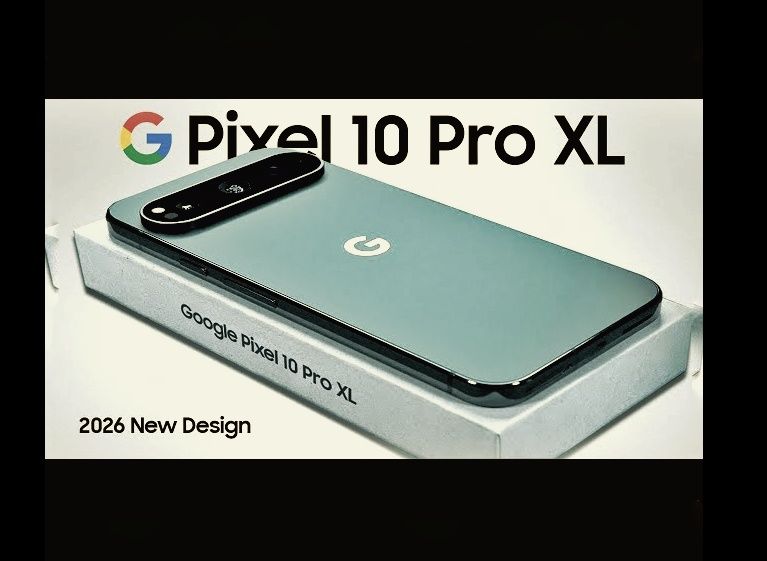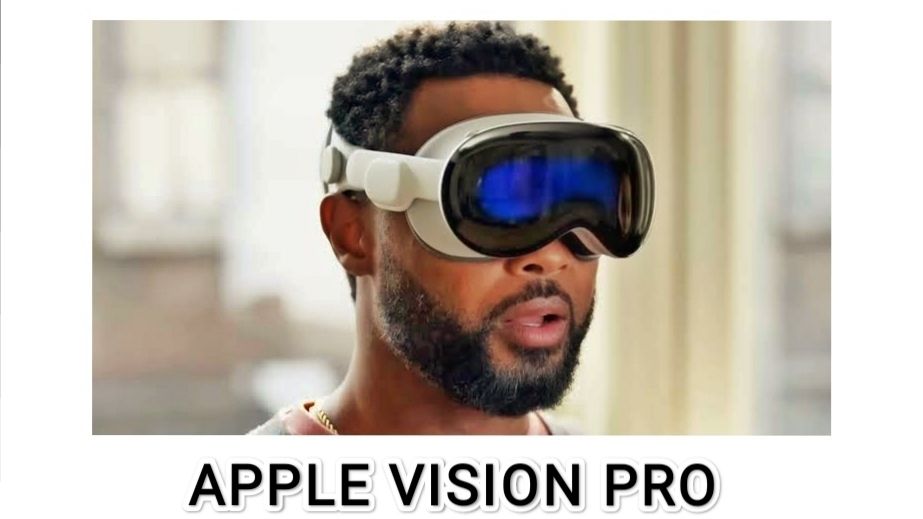Meta is betting big on the future of wearable tech. At its September 2025 event, Mark Zuckerberg officially unveiled the Meta Ray-Ban Display glasses — a new generation of smart eyewear that brings a small, full-color screen directly into the lens.
Starting at $799, the glasses come bundled with Meta’s new Neural Band wrist controller and will begin shipping in the US on September 30, 2025. This launch marks one of the most ambitious steps yet in making smart glasses useful in everyday life.
A Familiar Look With New Tech Inside
At first glance, these glasses look like a normal pair of Ray-Bans. Meta stuck to the classic frame design instead of going for a bulky, futuristic style. But hidden inside the right lens is a tiny display that shows quick information like text messages, live captions, navigation arrows, and photo previews.
Unlike bulky VR headsets, the Ray-Ban Display doesn’t take over your entire field of vision. It’s more like a heads-up display for your daily life — giving you snippets of info when you need it, while keeping you present in the real world.
Meta is clear: this isn’t a full-blown augmented reality headset like the company’s experimental Orion project. It’s a practical, consumer-ready product designed to bridge the gap between traditional glasses and future AR devices
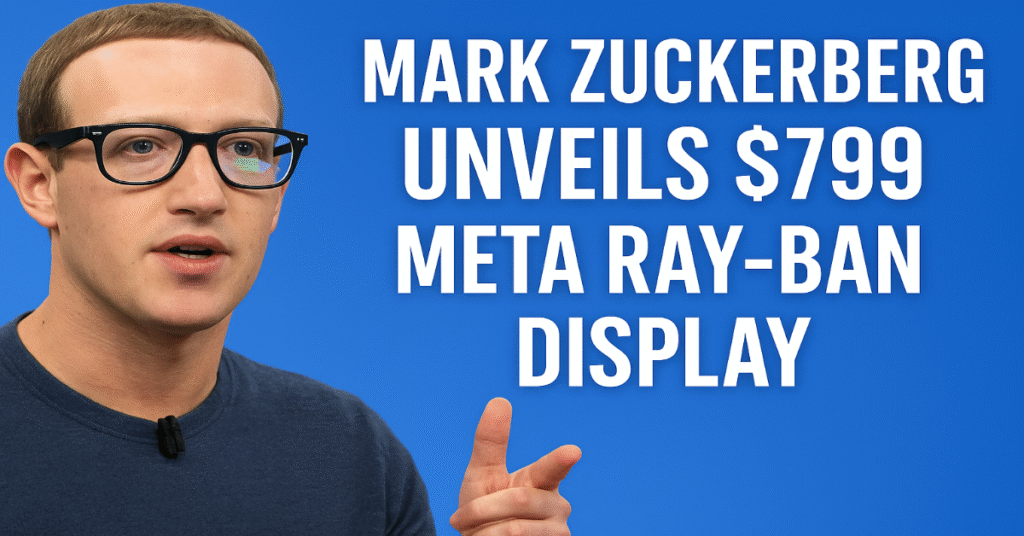
Price and Availability
- Price: $799 (includes the Neural Band).
- Launch Date: September 30, 2025.
- Where to Buy: The glasses will roll out in the US first, through stores like Best Buy, LensCrafters, Sunglass Hut, and Ray-Ban outlets.
- Options: Available in Black and Sand colorways. The lenses use Transitions® technology, so they adapt between indoor and outdoor lighting.
Meta also announced a refreshed lineup of Ray-Ban smart glasses without displays, starting at around $379, plus a sport-focused partnership with Oakley.
Also read – Apple iphone 17 air price and features
Hardware and Specs
Here’s what the new Ray-Ban Display brings to the table:
- Color display (right lens only): Shows text, image previews, translations, and simple visuals.
- Camera: A built-in 12MP camera for photos and short videos.
- Audio: Discreet dual speakers near the temples for music, calls, and AI responses.
- Microphones: Multiple mics for clear voice commands and conversations.
- Battery life: About 6 hours of active use, with the charging case extending that to around 30 hours total.
- Chipset: Powered by a Qualcomm AR-focused processor.
It’s not a powerhouse like a VR headset, but for lightweight tasks, it’s more than enough.
The Neural Band: A New Way to Control Glasses
One of the most exciting parts of the launch is the Meta Neural Band. This wristband uses EMG sensors to pick up tiny signals from your wrist and fingers, turning them into commands
This means you can swipe, scroll, or click without ever touching the glasses. A subtle twitch of your fingers is enough to control the display. It’s bundled into the $799 price, and while it takes some practice, early testers say it feels futuristic and surprisingly natural once you get the hang of it.
The band is also important because it solves one of the biggest challenges with smart glasses: how do you control them without waving your hands in the air or constantly talking to them in public?
Everyday Uses
Meta is pitching the Ray-Ban Display as more than just a tech toy. Here are the real-life features they’re highlighting:
- Navigation on the go: Turn-by-turn walking or biking directions displayed right in your line of sight.
- Instant translations: Real-time subtitles or translated text for conversations in another language.
- Message previews: Glance at a WhatsApp message or Instagram DM without pulling out your phone.
- Live captions: Helpful for accessibility, or when you’re in a noisy environment.
- Camera preview: See the photo you just snapped before sharing it.
- AI assistant: Meta AI built into the glasses for quick answers, reminders, or content suggestions.
In short, the glasses are meant to give you the most useful bits of your phone — without constantly staring at a screen in your hand.
Privacy and Safety Questions
As with earlier versions of Meta’s smart glasses, privacy concerns are unavoidable. Since the glasses include a camera and AI features, people worry about being recorded without their consent.
Meta says it’s working on clearer privacy signals and better data protection. Still, watchdogs and privacy advocates are expected to keep a close eye on how this data is collected and used.
There’s also the price issue. At $799, the Ray-Ban Display isn’t cheap. While tech enthusiasts may jump at the chance, mainstream adoption will depend on whether people see enough value in wearing them every day.
Why This Matters for Meta
Meta has been betting its future on the “metaverse” and AR technology for years, but adoption has been slow. The Ray-Ban Display is part of a step-by-step strategy:
- 1. Start with stylish, familiar glasses
- 2. Add lightweight smart features people actually use.
- 3. Build consumer trust and developer support.
- 4. Eventually move toward full AR headsets with more immersive experiences.
By keeping the product practical and relatively affordable compared to bulky AR headsets, Meta hopes to get more people comfortable with wearing displays on their faces.
Industry analysts see this as a testing ground for future AR. If consumers embrace these glasses, Meta will be better positioned to lead when full AR eyewear becomes viable.
Who Should Buy Them?
These glasses are designed for:
- Early adopters: People who love trying new tech first.
- Busy professionals and travelers: Those who can benefit from translations, captions, and navigation.
- Content creators: The built-in camera and instant sharing to Instagram/WhatsApp may be appealing
- Accessibility users: Live captions could be a big help for those with hearing challenges.
For the average consumer, the $799 price tag may feel steep for what are essentially “notifications in your glasses.” But for people who see daily value in quick, hands-free info, this could be a game changer.
Summary –
The Meta Ray-Ban Display isn’t science fiction. It’s not a full-blown holographic AR headset either. It’s something in between: a pair of stylish Ray-Bans that quietly add a digital layer to your day.
At $799, it’s an investment, but one that shows where personal tech is headed. Meta is betting that the next decade won’t just be about phones in our pockets, but screens and AI woven into the things we wear.
For now, these glasses may only appeal to early adopters and tech enthusiasts. But make no mistake: this launch is a big milestone. It shows that wearable displays are no longer just futuristic experiments — they’re starting to become part of everyday life.

